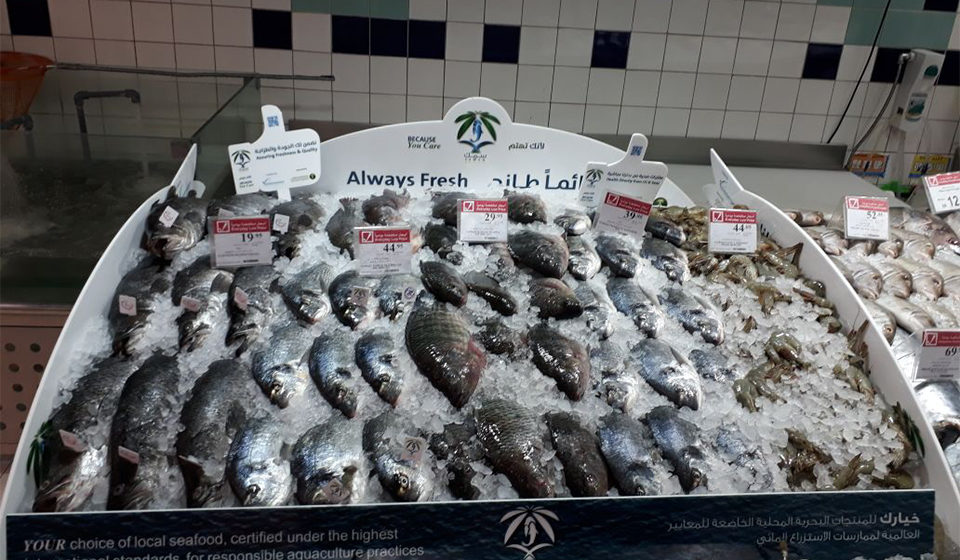Important steps for all food businesses to consider

That day when you relax and think you have all the bases covered and get just a little over confident with your food safety processes is the day that it will bite you hard. When it comes to seafood safety there can be no relaxing!
Food poisoning is a serious issue and the impacts are far reaching, so it pays to ensure that you and your staff are well trained in all the processes involved, including food recalls. Food safety strikes big and small companies alike, and the impacts can be far reaching.
It is reported that every year, foodborne and waterborne diarrheal diseases kill about 2.2 million people, including 1.9 million children globally.
In the heat of summer this is an important reminder to everyone in the industry to not forget the basics. Avoiding food recalls by ensuring that seafood staff are adequately trained and ensuring efficient risk management practices are engaged is an essential.
Microbiological food safety issues
A study recently published titled “Comparison of Microbiological Food Safety Issues in New Zealand and Australia” by Malik Altaf Hussain, MSc, Ph.D., highlights the issues.
One of the scariest comments related to a survey on trust in the Australian food supply. The strong indication from the survey was that, while participants (consumers) had little knowledge, or interest, in the understanding of food regulations, they still expressed high trust in the food system.
This compelled the report to include in its conclusions “common control measures such as food safety education and good practices (cleaning and disinfection) would help to effectively reduce risks of microbiological foodborne illness in Australia and New Zealand.” Basic.
To prevent foodborne diseases, many countries systematically monitor outbreaks, and Australia and New Zealand publish data in annual or quarterly reports about foodborne outbreaks by ESR (New Zealand) and OzFoodNet (Australia).
The health care cost of foodborne diseases has become a heavy economic burden for countries. In Australia, 5.4 million cases of food poisoning per year were estimated to cause an economic cost of AUD 1.2 billion, while the estimated total costs of foodborne disease in New Zealand were NZD 1.6 billion in 2009. To decrease or eliminate foodborne diseases effectively, the World Health Organisation developed a global strategy named the Global Environment Monitoring System – Food Contamination Monitoring and Assessment Program (GEMS/food) to monitor and supervise foodborne diseases from different countries, including New Zealand and Australia.
Foodborne pathogens, food vehicles or food preparation places associated with the high numbers of outbreaks were compared. The most frequent foodborne outbreaks in Australia and New Zealand were caused by Salmonella typhimurium and norovirus, respectively. The highest numbers of outbreak cases in both countries occurred in restaurants, aged care facilities and private homes.
The report states that “some similarities and differences existed in the microbiological issues faced by both nations. Common concerns are the diversity of microorganisms and the ability of foodborne pathogens adapt to a new environment as these are likely to increase the degree of difficulty for surveillance and prevention of foodborne diseases.”
Salmonella typhimurium is not something that you want to either have or to pass onto others (the writer has experienced the issue firsthand, a one-month hospital stay and three months off work). It it is imperative we get this warning out and have people more aware than they are currently.
South Australia (1.7 million people) last year had the largest recorded number of food poisoning cases in recent history. Salmonella cases alone were 15 percent higher than the preceding five-year average.
Their largest outbreak was at the Intercontinental Hotel (part of the largest global hotel chain) in Adelaide, the state’s capital. Guests dining on the buffet breakfast became ill due to food cross-contaminated with Salmonella from eggs. In total, 140 people felt unwell, 85 were confirmed as having Salmonella poisoning and 20 people were admitted to hospital.
At the other end of the chain, customers of Gawker Street Bakery (a relatively small outlet) fell ill after eating sandwich-like products containing chicken. In this outbreak 49 people fell ill and nine were admitted to hospital. Some of those who fell ill were in the high-risk groups for food poisoning including a pregnant woman, a 2-year-old and a 70-year-old.
A few years back it was highlighted that there more than 3,400 verified instances of food safety violations associated with products exported from 117 different countries. The incident data were gathered from multiple sources, including U.S., E.U. and Japanese regulatory entities.
At the top of the list was India (about 380 of the incidents identified worldwide) followed by China (340); Mexico (260); France (190), and the United States (180). Vietnam, Brazil, the Dominican Republic, Turkey and Spain completed the top 10.
U.S. food safety violations
The United States is regularly listed as one of the top 10 countries with the most food safety violations. The incidents in the report’s dataset addressed raw or minimally processed foods, including seafood, vegetables, fruits, spices, dairy, meats, grains, nuts and seeds.
The sources of the problems were analyzed, and the investigation found that more than a third of them were due to “excessive or illegal pesticide contamination.” The next main causes of food safety problems were pathogen contamination and excessive filth or insanitary conditions.
A difficulty for the United States is that it relies heavily on the importation of seafood to meet its demand and consequently not only has to deal with its own issues but also all the countries it imports from. It is not practical nor economical to check each shipment and no country inspects more than 50 percent of food that it imports, and most of them inspect much less than that.
A recent example being the death of a 71-year old man in Florida. Unfortunately, the gentleman died two days after eating the oysters.

Emphasis on buyers and businesses
There is more and more emphasis on the buyer and it is an imperative that businesses understand their responsibilities and ensure that all their staff undergo the proper training for food safety. This, ideally, should cover basic seafood industry and internal business training as well as food safety and food handling.
It is a legal requirement in Australia that all employees who handle food must be trained in food safety. There are several options for this training:
- Online nationally accredited training courses
- Classroom based nationally accredited training courses
- Use of manuals to instruct staff
- In-house training through a consultant.
For many states in Australia, it is mandatory to have a food safety supervisor nominated on staff. This supervisor must have the proper training and certificates and must be registered before they can work in this position. You can either have one of your current employees trained to become a supervisor or you can hire an outside contractor.
It has been suggested that when you begin searching for a supervisor, a few things to consider are:
- They should have proper training and certification.
- They should understand their responsibilities to the business.
- They should be willing and able to supervise your employees on food safety and personal hygiene.
- They should be prepared to handle any noncompliance or negligence issues that arise.
You simply cannot run a food business without a food safety supervisor on staff. This employee is responsible for ensuring all food safety codes are followed in the day-to-day operation of the business. Creating induction processes, training all the employees and ensuring the food safety program (based on HACCP principles) is updated and followed is just part of the responsibility.
For any new businesses (or even older ones who are updating) it is important to consider these steps:
- Determine if you need to be registered and licensed – rules vary in each area.
- Find out what your food business classification is.
- Contact your local authority to register your business premises, pay any fees and fill out the required paperwork. They may have ways to assist you too.
- Determine what other licenses or permits you’re required to have to operate, e.g. you may wish to export
- Implement a food safety program and show proof to your local authority.
- Hire or train a qualified food safety supervisor and ensure that everyone involved in your business understands the importance of food safety.
- Consider all your risks and discuss insurance with your broker.
- Take your consumers along for the journey noting that most food safety incidents happen in the home but are often blamed on the business – education is vital.
Getting started with your food business is fun and exciting, yet also stressful. Ensure that you follow the proper steps before you can start operating. Once you have all this in place, you will need to pass regular food inspections, stay up-to-date on new food safety laws and be prepared for any random audits by Environmental Health Officers (EHOs) or companies that you supply.

Food safety practices prevent foodborne diseases
Clearly, enhancements in food safety practices could avert foodborne disease and this was one of the most important fundamentals of strategies to reduce outbreaks. The lack of food safety knowledge among food handlers has been widely recognized as problematic area in food safety.
In New Zealand, the most common food preparation places associated with foodborne outbreaks were private homes (26 percent), aged care facilities (26 percent), restaurants (11 percent), childcare centers (10 percent) and unknown preparation sites (11 percent). On other hand, in Australia, the high-risk food preparation places were restaurants (39 percent), aged care facilities (11.8 percent), private homes (10 percent), commercial caterers (8 percent) and takeaway businesses (7 percent). A most dangerous aspect mentioned above is that when you are dealing with the very young and the very old, you are dealing with people who are the most vulnerable – clearly a major concern.
And just how clean are the food delivery trucks? Considering the vehicle or source implicated in foodborne outbreaks during the period from 2007 to 2011, there were 720 and 510 foodborne outbreaks associated with an identified vehicle or source in Australia and New Zealand, respectively.
Finally, the report states: “Most of the reported foodborne outbreaks … were noticed to be mainly associated with poor handling practices during food preparations and unsatisfactory hygiene in the private or commercial kitchens. So any improvement in food processing, storage and distribution will have a positive impact and contribute in lowering the potential risks of foodborne outbreaks.”
The seafood industry is on notice. Let us get our act together on food safety and let us have the courage to bring to the attention of all stakeholders those attention areas where improvements could be made.
Author
-

Roy D. Palmer, FAICD
GILLS 2312/80 Clarendon Street
Southbank VIC 3006 Australia
www.seafoodprofessionlas.org[109,111,99,46,108,105,97,109,103,64,100,121,111,114,114,101,109,108,97,112]
Related Posts

Responsibility
Addressing safety in Latin America’s tilapia supply chain
Over the last decade, the experience gained by many tilapia farmers combined with proficient programs implemented by local governments have significantly improved tilapia production in various Latin American countries like Colombia, Mexico, Ecuador and other important tilapia producers in the region.

Intelligence
As ocean temperatures rise, so too will vibrio outbreaks
A study using a half-century of data has linked climate change and warming sea temperatures with an increase in illnesses from the common vibrio bacteria. Shellfish growers, fighting a particularly virulent strain of Vibrio parahaemolyticus, are changing their harvest protocols.

Intelligence
Behold the nutritious oyster
Oysters provide important, natural filtration of water and are an important component of many healthy coastal ecosystems because their active filtering can help improve and maintain water quality. For many coastal communities, oysters are an important food resource and excellent sources of protein and amino acids, zinc, selenium, iron and B-vitamins.

Intelligence
Food is abundant, yet people are starving
While significant numbers of people are undernourished, an increasing number of people are overweight. The divide between recommendations and results is marked, so we must learn more about food production and change our behaviors.

